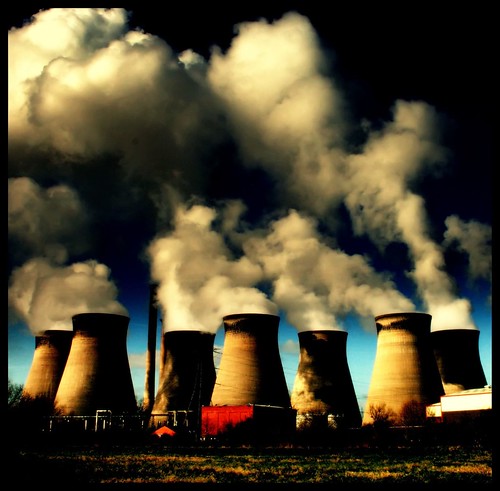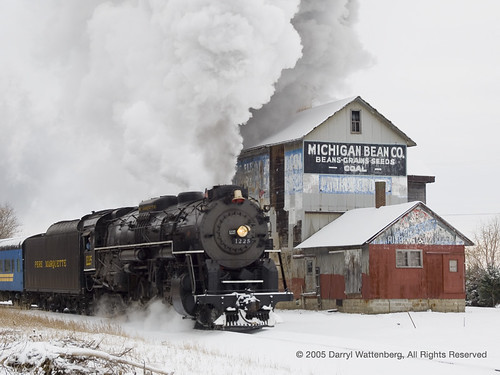
Transportation logos are an interesting breed of logo: most states follow the [State] Department of Transportation formula. The US Department of Transportation began using the new logo in 1980, which is a circle with inscribed swooshes, which I am assuming stand for the different modes of transportation USDOT administers – and it is usually the abbreviated format because the full title is soooo long.
The following logos, for the majority, use the abbreviated format. And almost all DOT logos use italics or stripes to denote speed. Because, deep down, you want your roads to be flat, fast and devoid of state troopers.
Category: General
Nerman Museum of Contemporary Art
 Nerman Museum at Night, originally uploaded by _ww
Nerman Museum at Night, originally uploaded by _ww
When the new Nerman Museum of Contemporary Art opens to the public Oct. 27, it may not have the architecture critics turning somersaults.
Artists and art lovers, on the other hand, have something to celebrate in architect Kyu Sung Woo’s quiet minimalist structure of white limestone and glass at Johnson County Community College.
…
Woo’s design — a rectangular box that projects diagonally from another rectangular box toward the intersection of College Boulevard and Quivira Road — will let them shine.
Galleries defined by big walls and right angles and proportioned in accordance with the so-called golden mean or golden ratio are ideal for displaying large paintings and playing the straight man to unruly sculptures and installations.
Kansas City is becoming quite the museum town with the Nerman Museum and the Nelson Atkins Museum Bloch Building by Steven Holl opening in the last year. Check out A Daily Dose of Architecture and Photos on Flickr for more photos.
Zaha Hadid’s Chanel Mobile Art container

Moving Pictures photo by The New York Times
The Mobile Art container, which is to roam the world from 2008 to 2010 bearing installations by 18 international artists. But the real showstopper is bound to be the container itself: a Zaha Hadid-designed U.F.O. made of gleaming-white fiberglass with a ring of interactive exhibition space inside. Lagerfeld dreamed up the project after a chance encounter with Hadid in the lobby of the Mercer Hotel in New York; impressed by the starchitect’s ability to detach herself from “the totalitarianism of the Bauhaus,” he hoped that together they could reinvent the notion of a gallery while creating a spectacle that would align Chanel with contemporary art and design. The project’s curator, Fabrice Bousteau, calls it “a research investment.” Lagerfeld has already deemed it money well spent: “We could have inundated the world with ads,” he said. “But it is a more noble project.”
See also Wallpaper’s Mobile Art slideshow (photo below).

Zaha Hadid’s Chanel Mobile Art container photo by Wallpaper
On China & US Carbon Emissions and Market Economies
 , originally uploaded by andrewlee1967
, originally uploaded by andrewlee1967
Ryan Avent on China and US Carbon Emissions and Market Economies:
The US and its brethren have a great deal of slack in their economies, as measured by efficiency of carbon use. The fact that we produce so little per unit of emissions relative to the rest of the rich world tells me that we can eliminate a great deal of carbon output using currently available technologies and social structures, which are successfully deployed in other first world nations right now. Failure to do this basically tells the world that we believe we deserve to be richer than them–not because we’re more productive, just because. When the future of the world is on the line, maintaining this attitude is a good way to seriously alienate and provoke everyone else out there.
Next, it’s important to realize that our interests and China’s interests are nearly perfectly aligned. We both really, really need to protect Chinese economic growth and reduce Chinese emissions. And we ought to do this by cutting our own emissions, leading the way on international carbon reduction rules, and investing heavily in emissions cutting technologies.
[emphasis in original]
Very good points.
What he doesn’t mention however, is that if the US becomes the leader in developing green
or sustainable
technologies and systems, the US can go and sell that know-how back to the world we pushed to the breaking point. You would think energy companies would be scrambling to become that company, but so far the profits apparently aren’t worth the expenditures.
Monday, Halloween is Coming Soon, Links
- Jacob Javits Plaza: Reconsidering Intentions by John Hill
- America’s Most Sedentary Cities
- On cycling as an extension of the public transportation network: The Bogotá Transformation: Vision and Political Will
- On Boston’s Big Dig HOV Lanes – The roads less traveled: Built to ease traffic, HOV lanes are largely unused
- Plan: Make Bay Area drivers pay for global warming – read the primary source: MTC Transportation 2035
- California Regional Rail Plan
Fantasy Cities of Mattias Adolfsson
 large_city, originally uploaded by Mattias Adolfsson
large_city, originally uploaded by Mattias Adolfsson
GI Metro – All Aboard For Digestion, Excretion, and Points South

While I thought using transportation and circulation analogies to describe the human bodies were over in the 18th Century, I can make an exception for this. Buy your own GI Metro – All Aboard For Digestion, Excretion, and Points South shirt, and wear your anatomy proudly.
Rudolph W. Giuliani: Bat-shit Insane
Miracle in Mississippi – Trinity 28, Millsaps 24 10-27-2007
Transport, Competition and the Environment: How compatible are they?
 Pere Marquette 1225 Passes the Michigan Bean Company, originally uploaded by DarrylW4
Pere Marquette 1225 Passes the Michigan Bean Company, originally uploaded by DarrylW4
Trains use three times less energy than cars to transport people; six times less energy than trucks to move freight. Trains use and emit just one-fifth the amount of carbon dioxide. Governments can help fight global warming by using competition policy and tax incentives to induce transportation customers to switch to rail.
You. Go. Read: Transport, Competition and the Environment: How compatible are they?